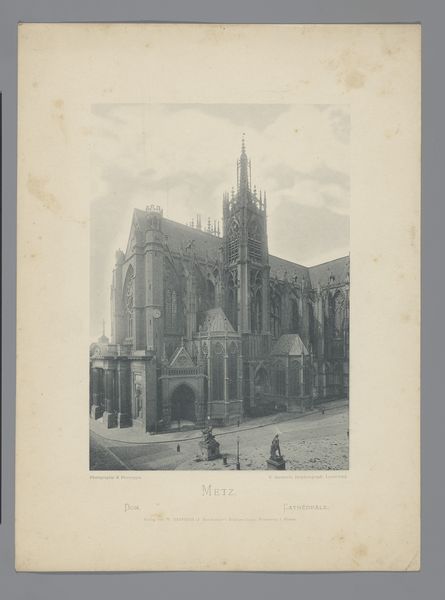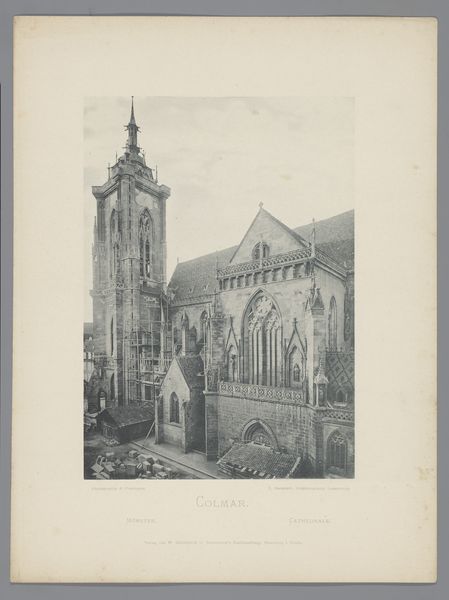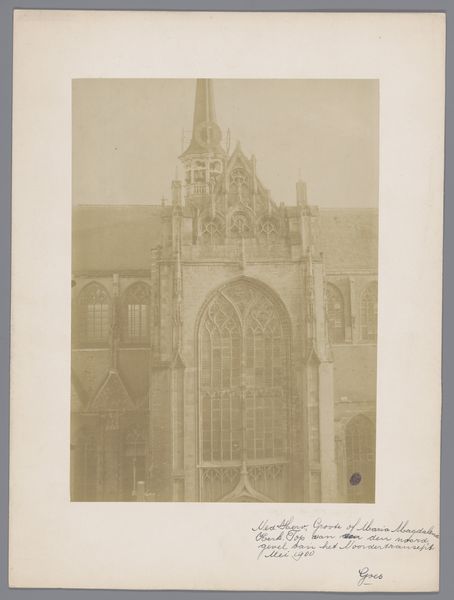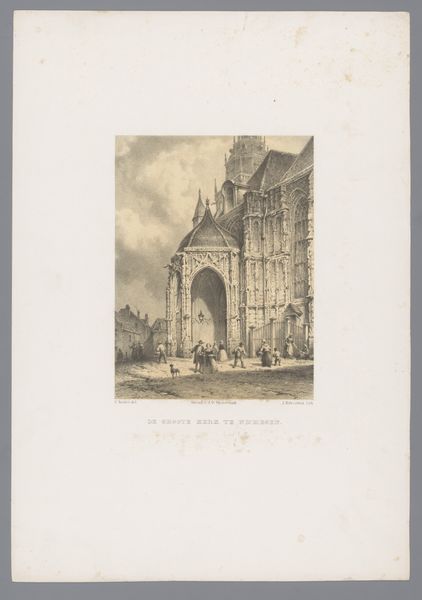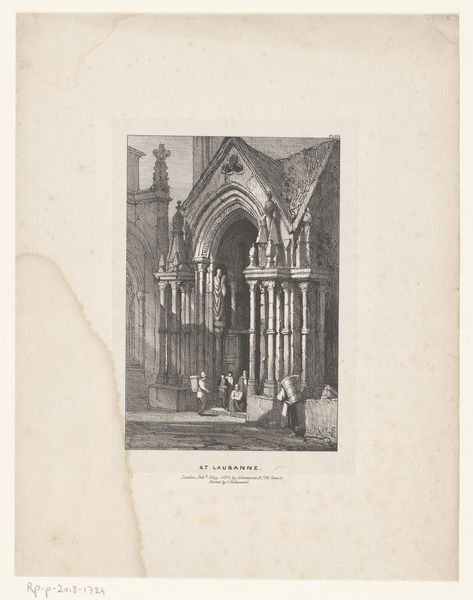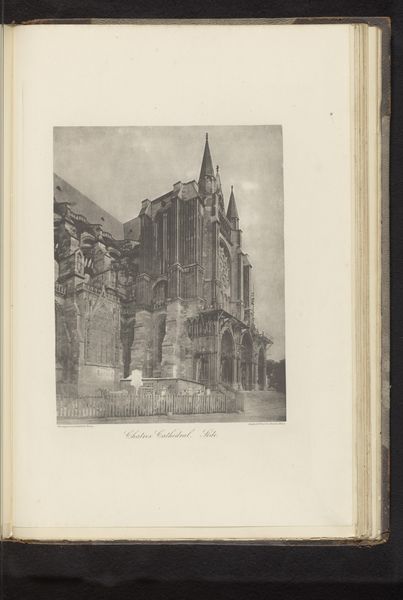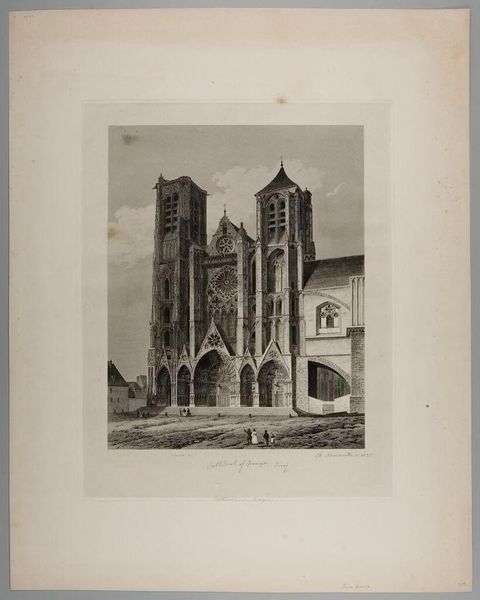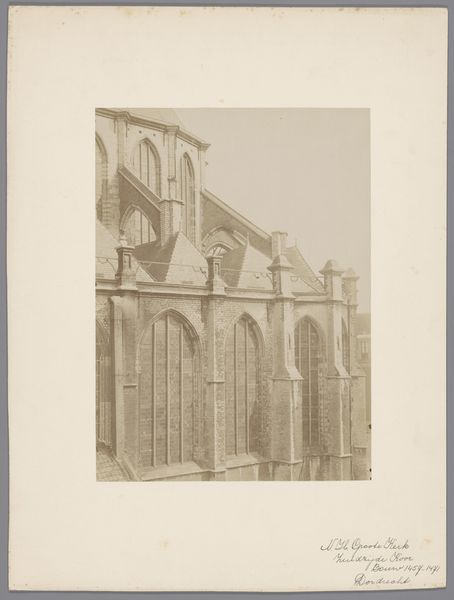
Dimensions: height 446 mm, width 315 mm
Copyright: Rijks Museum: Open Domain
Editor: Here we have Johannes Hilverdink’s "View of the Dom Church and Dom Tower in Utrecht," made in 1858. It’s a print, an engraving, actually. The precision of the lines is incredible, almost photographic in its detail, but the mood is definitively Romantic. What stands out to you? Curator: Well, first, I'm drawn to the labor involved. Think about the skilled artisan meticulously etching that plate, reproducing the scene in a way that mass production could then disseminate it. What does the accessibility of such images mean for how people begin to perceive their environment, their city? Editor: That's a good point! So, you’re focusing on how printmaking democratized the image of Utrecht… Curator: Precisely. Before photography's wide adoption, prints like these were crucial in shaping public perception and, frankly, consumption of the cityscape. Who was buying these prints? Where were they displayed? The answers tell us much about the burgeoning middle class and their aspirations. And how does the romantic style influence the sales? It's a commercial object and we need to consider how those themes are affecting its distribution. Editor: So, by examining the print’s creation and its audience, we can learn more about the social and economic context of the time. Curator: Exactly. The print becomes a lens through which to view the material conditions of 19th-century Utrecht, going beyond simply a pretty picture. Editor: I never thought about approaching it that way, thinking about art as a production. I appreciate that take a lot. Curator: It reveals much, doesn't it? And it challenges the very definition of what is considered fine art, no?
Comments
No comments
Be the first to comment and join the conversation on the ultimate creative platform.
